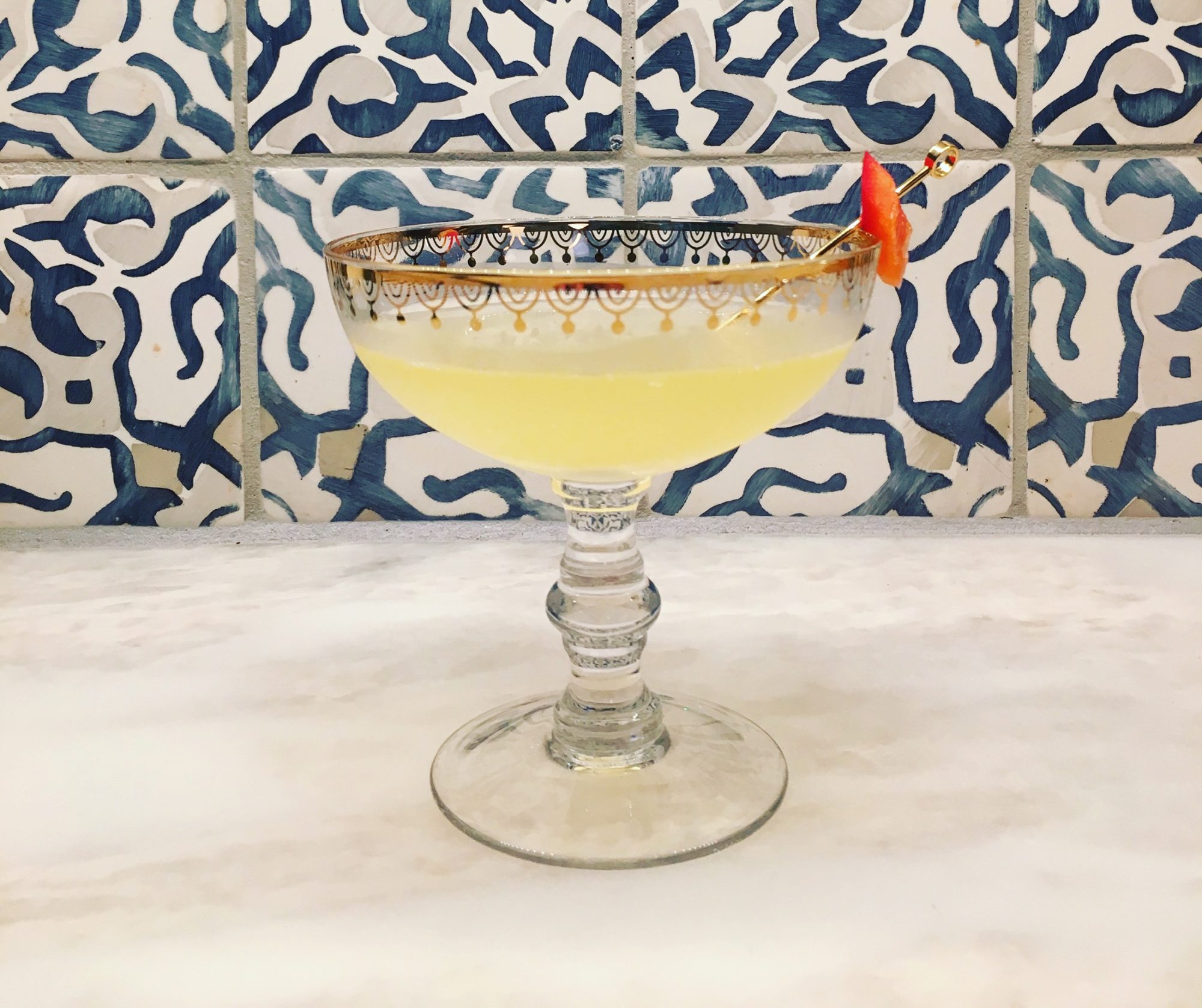I am back with one more martini recipe! This post will wrap up a string of martini posts that began with my review of the martini service at Requin. In that post, I promised you a few recipes for making martinis at home. First I offered my version of the classic martini recipe. Then I gave you my briny, spicy variation, the Hot and Dirty Martini. Here I offer you a third and (for now) final variation – fit for dry January – the non-alcoholic Actually Dry Martini:

As pictured here, this drink is powered by Seedlip Garden 108. Seedlip describes its products as the “world’s first distilled non-alcoholic spirits.” The Garden 108 is one of these. It features flavors of “leaf,” “herb,” and “pod.” (There’s also another variety – the Spice 94 – described as offering “wood,” “spice,” and “citrus” flavors.)
With its incorporation of gin-like botanicals, Garden 108 struck me as a plausible ingredient for an alcohol-free stand-in for the martini. Some might object at this point that a non-alcoholic martini is a contradiction in terms, or that using soft ingredients defeats the drink’s purpose. But I disagree. For me, the martini’s allure is in its botanical and vegetable flavors, which are uncommon in the cocktail kingdom.
That said, I must manage expectations. Garden 108 is not gin. So if you are hoping for an alcohol-free martini that tastes just like the real thing, this recipe is not for you. But I do think Garden 108’s unique flavors work in a drink with martini-like proportions and profile. The final product mixes notes of fresh cucumber, earthy brine, and light citrus. It’s a way to enjoy a month off from drinking without giving up the pleasing complexity of a good cocktail. And if you’re observing dry January, this recipe gives you excuse to stop your martini glasses from collecting dust.
To make this drink, you’ll need Garden 108 (obviously – available from Amazon and the link above). You’ll also need Gordy’s Fine Brine, discussed in the recipe post for the Hot & Dirty Martini. And you’ll need olives and some freshly squeezed lemon juice. Here’s the recipe:
Actually Dry Martini
Ingredients
- 2 1/2 oz. Seedlip Garden 108
- 1/2 oz. Gordy's Fine Brine
- 1 splash freshly squeezed lemon juice
Instructions
- Place two olives in a martini glass.
- Combine the Garden 108, Gordy's Fine Brine, and lemon juice in a mixing glass with ice and stir.
- Strain into the martini glass.
Enjoy!







